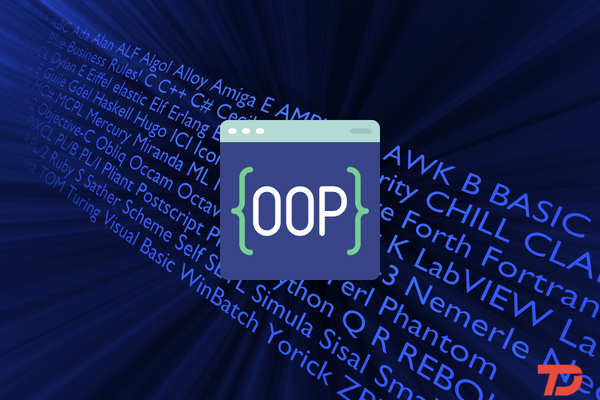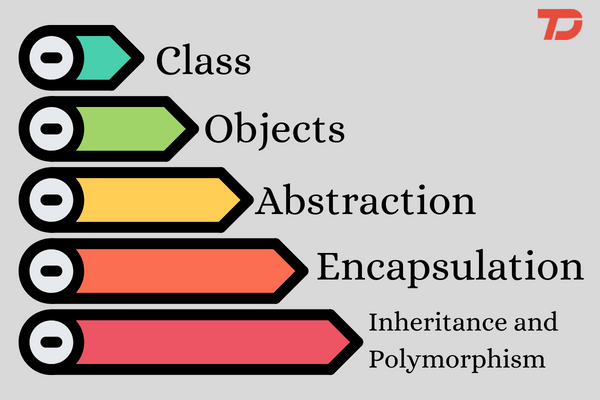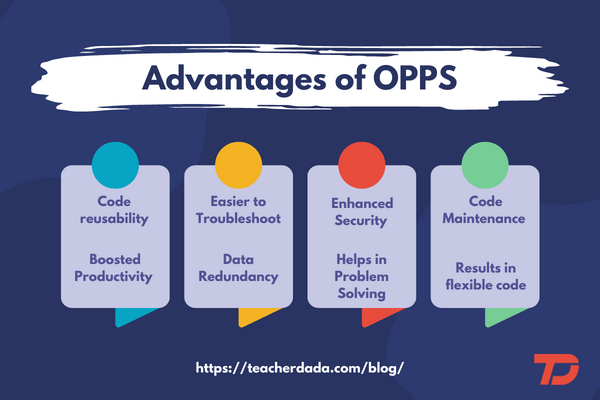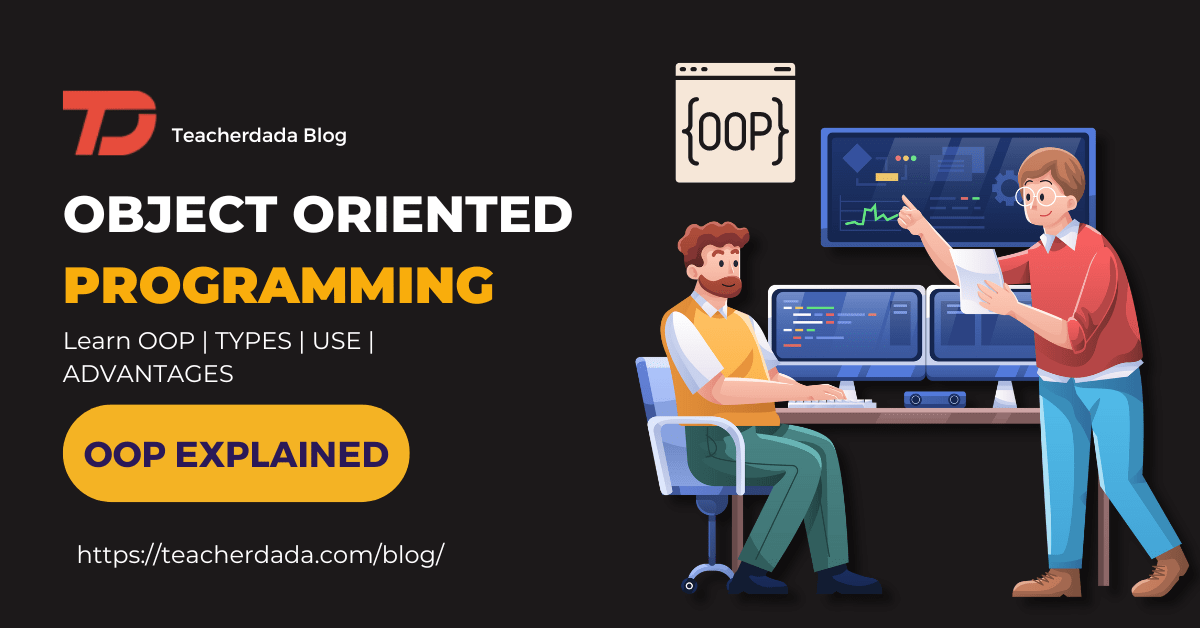Do you also think that understanding the OOPs programming language is tough? Are you confused about the advantages of OOPs and where to use it? Well, we have brought another blog deciphering every aspect of the programming language OOPs. Know what is OOPs programming language in detail with its advantages and disadvantages, how to use it, and what are its functions. Without further ado, let’s get started!
Definition of OOP (Object Oriented Programming Language)
Object-Oriented programming is a computer programming model that is run on the concepts of objects and classes. It is derived from two words i.e. Object and Oriented. Object in layman’s language refers to any article or entity. Whereas Oriented defines a particular or specified interest. In simple terms, it is a programming language that is centered around an object or entity and hence is called as Object Oriented Programming. Unlike any other logic-based system, OOPs work on a set of data contained in fields that indicate procedures.
OOPS is a method used by many developers as it makes programming easy. It has a sweeping effect as it works at multiple levels and is budget friendly than any other programming language. Basically, it is a method of storing data in the form of objects. This object is known as an Object data field that has its own behavior. It is one of the most popular programming languages among developers and everybody used it at some point if their careers.

The components of OOP make it easy for developing software in a seamless and simplified way. The key concepts of OOP involve abstraction, inheritance, polymorphism, and encapsulation. The first step involves the specification of the object and the encircled relationships. This step is known as data modeling. Objects are like humans. They can acquire traits, change them, or make connections among them.
Let’s understand this with the help of an example. If there is a company comprising employees from different branches. Say the CEO made a class of employees and further classified them according to differentiating factors like responsibility, age group, salary package, the field they work in, the experience they have, and so on. In the same way, in OOP if an object is identified that is employees in this example. The object might have its own features and some features would be common among them that we put in under a class in OOP.
Once your objects are in place, you may use their interactions.
Pillars of OOPs (Object oriented programming)
Let’s understand the basic concepts of OOP and its pillars. The following are given:

- Class:
A class as we discussed earlier is a set of objects. By managing the code effectively, the classes define a user’s data structures. Consider a company comprising employees. You want to store the details of each employee. The class containing the features of each object is called the class in OOPS.
- Objects:
The object is any real-world entity such as a pen, chair, or in our example, an employee is our object. The object has its own methods and properties.
- Abstraction:
Abstraction is one of the OOPs which is an act of presenting the core function on the surface and hiding the background details. It is a technique that simplifies for the user to get an outcome without having to worry about how they are deriving the outcome. Let’s understand with the help of an example. You operate through a remote when you switch on the Television. Any function related to TV is done through the medium of the remote. But you never wonder what’s going on inside of the remote that is helping the TV to function. In the same way, the concept of abstraction allows us to hide the implementation and divulges the basic information to the user.
- Encapsulation:
Encapsulation is one of the best OOPs concepts for wrapping the data and code. Now in order to make abstraction work, you will proceed through the way of encapsulation. Encapsulation is the way to achieve abstraction. It is the method of binding data and functions of a class into an entity.
- Inheritance:
Inheritance is one of the basic concepts of OOPs in which an object inherit the properties of an existing class that may be called a parent class into a child class. It’s creating a parent-child relationship between two classes. It helps coders to achieve the reusability of code.
Check this blog to learn more on Inheritance in OOP
- Polymorphism
Polymorphism refers to one of the OOPs concepts in which under the same object, you can create different method signatures. In OOPS, it refers to having the same object but different attributes or functionalities.
Our Related Courses to Learn OOPs
Learn C# Coding Intermediate
Python Coding Intermediate: Python Classes, Methods and OOPs
What are the Advantages of OPPS?
OOP has huge benefits to use. Thats why its most recommended and used all over the world. Check out the some main advantages of OOPs

- Code reusability
One of the key advantages of OOPS is code reusability. It helps the coder not to write the code again and again rather it can be acquired through inheritance. Inheritance allows the coder to eliminate the need for duplication. The functions and attributes can be passed down without having the need to re-generate them. Through the parent class, a child class can inherit the same properties and functions.
- Boosted Productivity
OOPS has pre-written modules that can be used again and again without having to generate new functions and attributes for classes. The process of acquiring traits through inheritance allows the coders to save time and hence boost their productivity. Due to the concepts of classes and objects, the whole code is divided into manageable sections that are object-oriented.
Not only this, you can new features and attributes to the objects. Due to the multiple usabilities of objects in different applications, software development has never been easier with OOPS. unlike structure base programming, OOPS provide modularity and reusability.
- Easier to Troubleshoot
When object-oriented programming is used, troubleshooting is easier to handle. The coder doesn’t have to use additional codes to find errors because it’s easier to find the source of the problem. With the advantage of code reusability, DevOps engineers now can work on several projects without worrying about writing the code from scratch.
- Data Redundancy
While listing the advantages of OOPS, this comes in handy when it comes to data redundancy. The place of storage where databases are stored can be placed at different places as well. If you wish to create similar functionality, you can go ahead by using the same functionalities and inherit them.
- Enhanced Security
With the mechanism of Encapsulation and abstraction, only the essential information is divulged to the user, hiding the core functionality of your code. OOPS provides necessary data and reinforces security in comparison to other programming languages.
- Problems Solving
The whole concept of OOPS work on discrete components that are further divided among chunks or objects. So you can break down your software into the smallest component and select one object at a time. The components can be used as a solution to other problems.
Let’s understand this with the help of a real-time scenario. While manufacturing a car, there are different components at its base. This includes wheels, and engines, among others that can further be broken down into screws and bolts. In the end, the engine is not required to know the details of the smaller components to deliver robust performance.
- Code Maintenance
After understanding what is OOPS, you are aware that it is easier to maintain in terms of code. By adjusting significant components, you can solve problems by directly focusing on the issue. It is so because it can be broken down into bit-sized components and can be used as solutions to other solutions.
Any coder would be relieved as this helps them not to redo the code again and again. You can add or maintain the code easily since you can make new objects by making minor changes. It is way easier and time-saving that has become a necessity for any programming language over time.
- Results in flexible code
Polymorphism is the concept of OOPS that allows for flexibility. Polymorphism as we stated above allows for using the same piece of code to exist in other versions as well. This enhances the flexibility of the code and extensibility. Let us look at a simple example. As a person, you act in every environment differently, as a wife, daughter, student, or customer, you act differently in different environments. Here, the same person displays various behaviors.
- Lower Development Cost
As we learned under OOPS, the code can be reused as a solution for other issues. They can use different parts of the system without altering anything big. That is why it has a slow development cost. You get better object-oriented analysis and design that too at a lesser cost of development.
Limitations of Object Oriented Programming
- OOPS, programming goes through intensive testing procedures.
- The size of the program is larger in comparison to the procedure-oriented approach.
- You require to pre-plan and work in order for successful implementation. Without working on details beforehand, do not dive into the coding process.
- OOP code is difficult to comprehend for other coders if you do not have the class documentation.
- It consumes and requires a large amount of memory for storage.
Related Post : Top Programming Languages to Learn in 2023
Conclusion
Now you have covered with all the important things on Object oriented programming and its important use in coding and programming. For more related topic follow our programming blogs.
Frequently Asked Questions
What are the main advantages of object-oriented programming?
OOPs provides clarity in programming with their features of inheritance, abstraction, and polymorphism. This allows for simplicity in solving problems. Once a piece of code has been written defining some functionalities, it need not be written again due to inheritance, thereby reducing redundancy. Code and data are bound together by encapsulation. Data hiding is valid in OOPs, thereby providing data privacy. Problems can be cut down into simpler, independent blocks to be coded making it easier for teams to work together. Errors can easily be identified and solved at the root level and the changes will be inherited by all the objects. Lastly, polymorphism allows flexibility by imparting freedom to entities to take multiple forms.
What are some languages that use object-oriented programming?
Simula was the first programming language to use OOPs. Nowadays, a handful of languages use OOPs in the backend. These include pure OOPs languages such as Ruby, Scala, and Jade. You can also find high-level languages designed primarily for OOPs like Python, Java, and C++. Languages that partially pair with OOPs are JavaScript and PHP.
What are some paradigms used other than OOPs?
OOPs uses the imperative programming paradigm. The second programming style is called the declarative paradigm. It does not contain a detailed control flow but only contains the details about what to execute.
Why do we need to learn OOPs concepts?
Because of reduced development time, you can reuse code and can develop models based on previous objects. It’s clean and efficient so you do not have to work on re-writing the code. Another reason as o why you should learn OOPS concepts is that it maintains the security of data. It is easier to modify and maintain while fetching proven results. It also provides modularity for easier troubleshooting.

